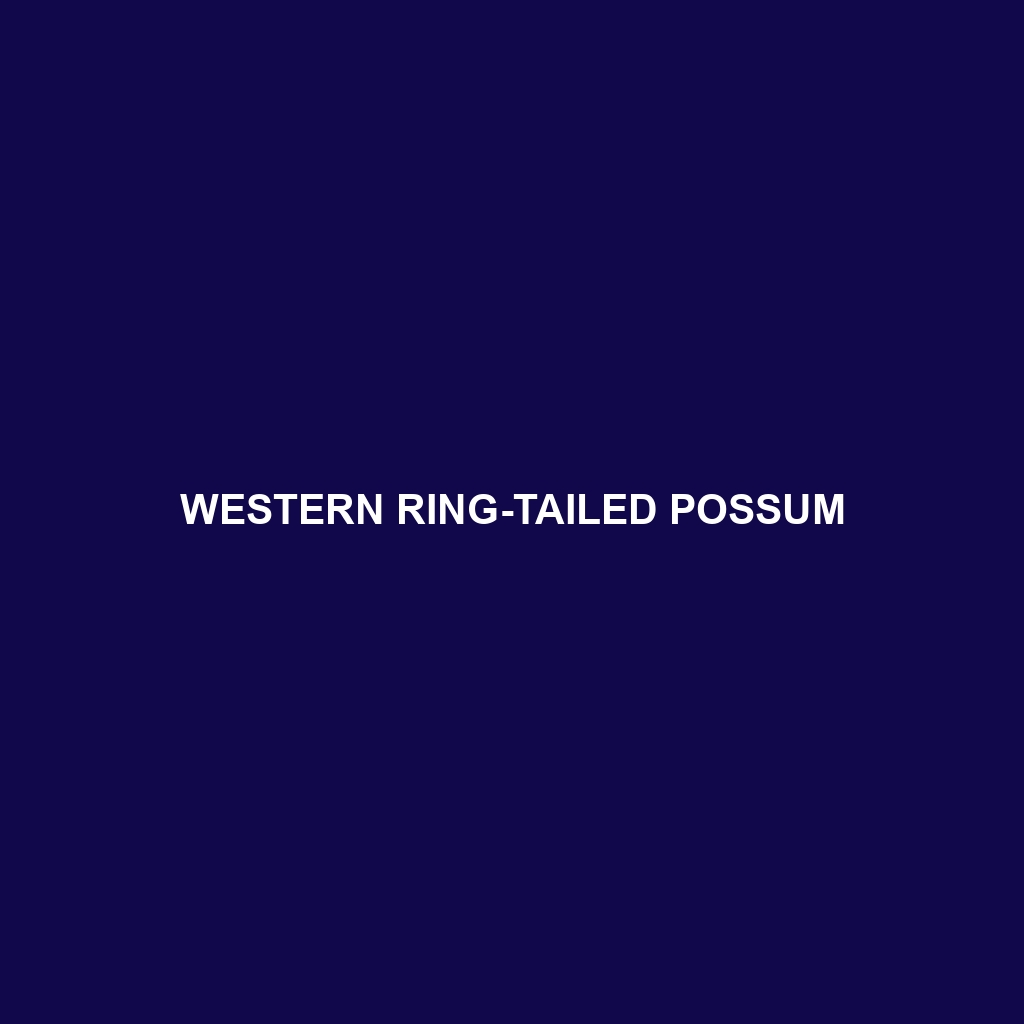Western Ring-tailed Possum (Pseudocheirus occidentalis)
:
The Western Ring-tailed Possum is a nocturnal marsupial native to the southwestern regions of Australia. Known for its distinctive curled prehensile tail, it plays a vital role in its ecosystem. These possums are arboreal and primarily folivorous, relying heavily on local flora for sustenance.
Physical Characteristics:
Size: Adult Western Ring-tailed Possums measure between 30 to 40 centimeters in body length, with an additional 30 to 35 centimeters of tail, and typically weigh between 700 grams to 1.1 kilograms.
Coloration: Their fur is predominantly grey to brown with a paler underside. The tail is a distinctive feature, often black with a white tip, and prehensile, allowing for excellent grasping and balance while navigating through trees.
Special Features: Besides their prehensile tail, they have large, forward-facing eyes adapted for night vision, and sharp claws that assist in climbing.
Behaviors:
Social Interactions: These possums are largely solitary but have been known to share nests in small groups, especially during the colder months. They communicate through a range of vocalizations and scent markings.
Feeding Habits: Western Ring-tailed Possums are primarily folivorous, feeding on the leaves, flowers, and fruits of various native plants, with a particular preference for eucalyptus and myrtle leaves.
Ecological Roles: As herbivores, they play a crucial role in seed dispersal and the maintenance of plant health through their feeding habits.
Habitats:
Preferred Environment: They inhabit dense, coastal forests and woodlands, often in areas abundant with peppermint trees (Agonis flexuosa). They require thick understory vegetation for shelter and food.
Nesting: They build and reside in spherical nests called dreys, made from twigs, leaves, and bark, often located within tree hollows or dense foliage.
Adaptations:
Arboreal Lifestyle: Their prehensile tail and sharp claws are perfect adaptations for a life spent in the trees. Their tails allow them to grip branches securely, while their claws provide traction for climbing.
Nocturnal Activity: Enhanced night vision and acute hearing facilitate their nocturnal lifestyle, helping them to forage and avoid predators under the cover of darkness.
Digestive Adaptations: They possess a specialized caecum that aids in breaking down the tough cellulose in leaves, extracting maximum nutrients from their fibrous diet.
Conservation Status:
Threats: Habitat loss due to urban development, logging, and agriculture, as well as predation by introduced species like foxes and cats, have led to declining populations.
Conservation Efforts: Conservation programs focus on habitat preservation, predator control, and public education to support the survival of this species.
IUCN Status: As of the latest assessment, the Western Ring-tailed Possum is listed as Near Threatened, but conservation efforts are critical to prevent further decline.
Fun Facts:
Tail Trick: Their name comes from their unique prehensile tail, which they often curl into a ring, showcasing their incredible dexterity.
Nesting Habits: They can construct multiple dreys within their home range, which they might use alternately.
Eucalyptus Lovers: Despite the eucalyptus leaves being toxic to many animals, Western Ring-tailed Possums have evolved to detoxify the harmful compounds, making them some of the few species that can heavily rely on this diet.
By understanding and appreciating the intricate details of the Western Ring-tailed Possum’s life, we can better support conservation efforts and ensure the survival of this fascinating marsupial.
